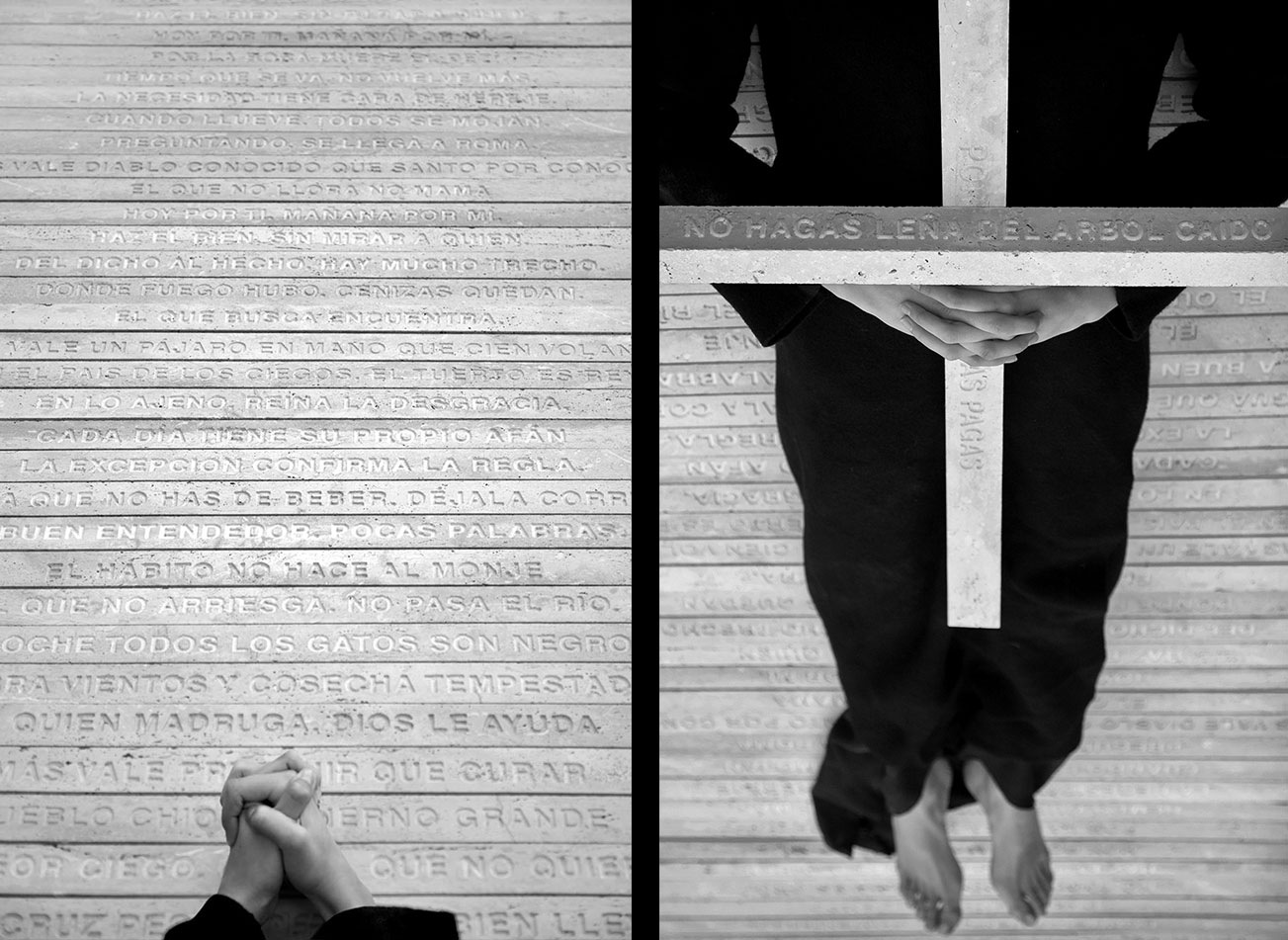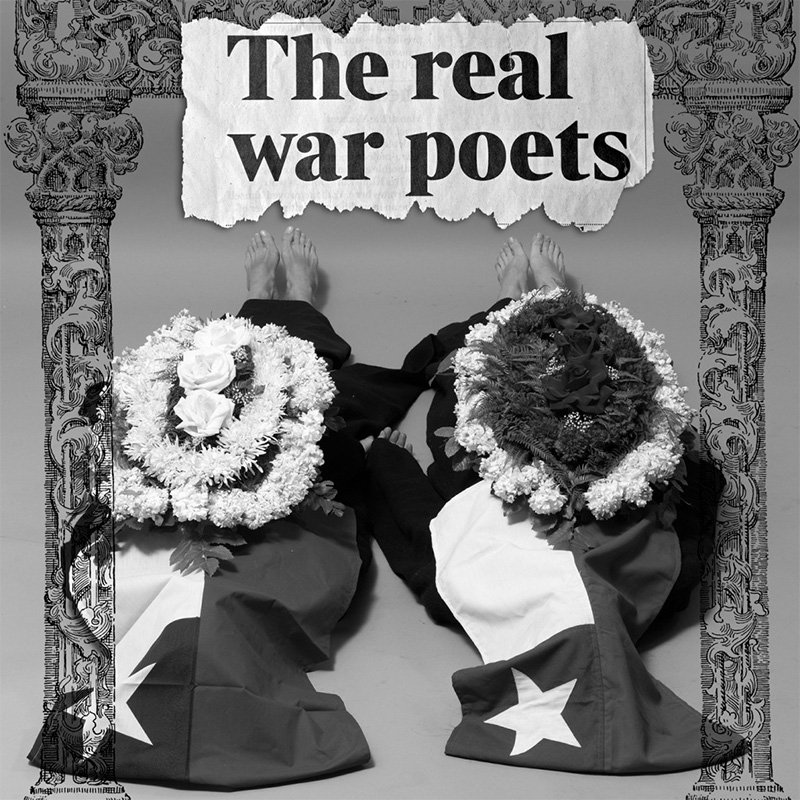Prior to the installation of the proverbs on marble of PUBLIC PLACES, the authors were photographed representing acts of offering, prayer and penitence through the engraved words. The scared quality of the images of THERE IS NO WORSE BLIND MAN THAN ONE WHO DOES NOT WISH TO SEE go together with a humour and popularity of the sayings original source: warning, advice, and moral observation, creating contrast between the practical values and the enigmatic and solemn aura that invades these images. They roam the intersection between the sacred and the popular, between humour and sentence, in a type of limbo that can only be reached through death. These images are the memory of something that happened, of a visually coded act of faith.











